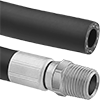Filter by
ID
Mount Type
Finish
Thread Size
DFARS Specialty Metals
Center-to-Center
Rail OD
Mounting Hole Diameter
Slip-On Framing Component
Weight Capacity
Maximum Temperature
Material Handling
Fluid Handling
Building and Machinery Hardware
Electrical
Fastening and Joining





































































